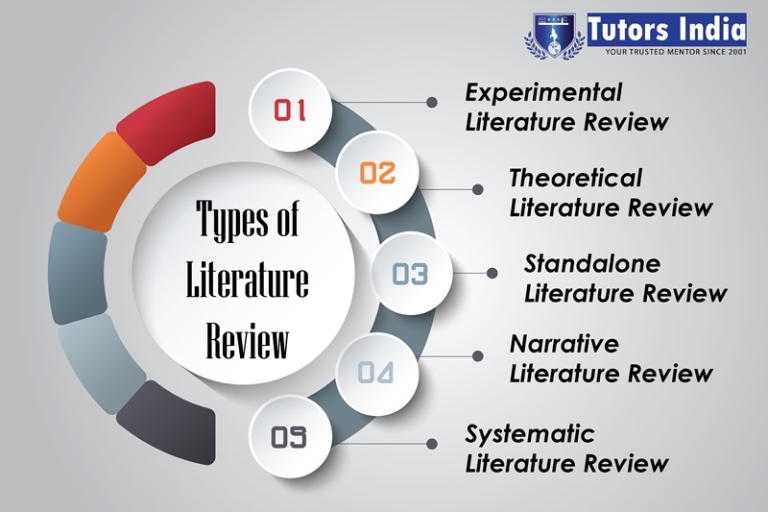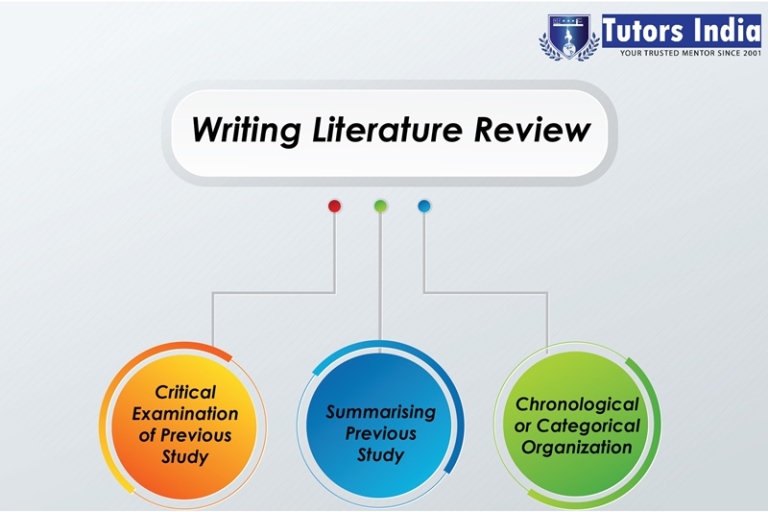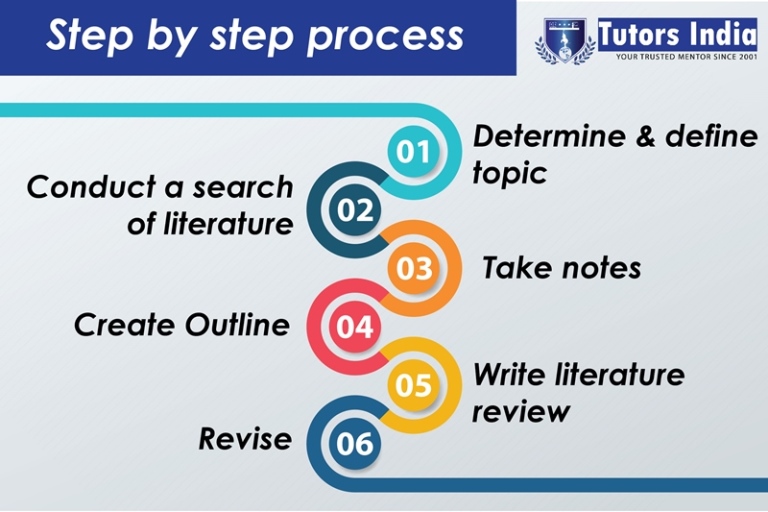Step by Step Guidelines for Masters Writing Literature Review
Tagged: Literature Review
Introduction
When it comes to preparing a literature review for a research paper, many scholars struggle to cope. A literature review is a complete summary of all the information about a certain topic at hand that is presently accessible. When you settle on a study topic, the initial step is typically to study further about prior studies done on this topic, which ultimately converts into a literature review when you write your research article. The literature review is one of the cornerstones around which your research concept is built since it offers insight, meaning, and context to the research subject you are investigating. From identifying the right research aims to correctly understanding and presenting the research findings, a comprehensive literature review is critical for the whole life cycle of a study.
When writing a research paper on a given topic, you’ll almost always need to include a summary of any previous research on the subject . If your research article is on effect of music on plant growth, for example, you will almost certainly need to present a summary on effect of music on plant growth of previous studies. A literature review is a term used to describe this summary.
There are many different types of literature reviews. They can be included in a research paper as part of the Introduction section, for example. They can be part of a PhD dissertation’s chapter. Literature reviews can also be standalone articles. Full-length review papers are often published in journals like Annual Review of Psychology, and others. Alternatively, a literature review may be necessary as part of a broader research study.
Overall, whether produced as part of a bigger book or as standalone articles, all literature reviews have one thing in common: they don’t represent new study; instead, they provide an outline of previous study on a certain issue.
Types Of Literature Review
Experimental Literature Review
An experimental literature review entails examining all knowledge accessible on a certain issue and objectively analyzing the gaps that need to be filled. In this respect, this is the primary experiment in any scientific effort. The more extensive the review, the more comprehensive and methodical the research study will be. As a result, it is one of the most important aspects of one’s research.
Theoretical Literature Review
Theoretical literature review consists of two stages: Examining and objectively evaluating existing literature: this is generally termed to as experimental literature review. Theoretical review is the process of condensing and really writing down the essence of your study in an organized fashion.
Literature Reviews for Dissertation/Research Article
The Literature Review’s primary goal is to inform potential readers on the importance of undertaking the research in question. A complete literature review should start with a comprehensive literature investigation in appropriate data bases such as Google Scholar, PubMed, and others, employing the main keywords. After gathering all necessary literature, it should be structured as follows:
To educate readers to the field of research, background literature expands on the vast research topic. Recent developments in the research issue are documented and categorized conceptually or sequentially. Different views should preferably be covered in a chronological order to show how research in the subject has progressed over time and to emphasize the field’s progression.
A comparative and contrasting study of multiple researches should be included in the Literature Review. Contentious areas in Literature Review aids in identifying the major flaws that need to be addressed. This is necessary for outlining the study’s problem statement and emphasizing the significance of the research in question.
Following the definition of a problem statement, the merits and weaknesses of previous research that have addressed the problem statement should be discussed. This is critical for highlighting the research’s need and uniqueness. A literature review should not just be a recitation of all existing data. It ought to be a strategic and reflective summary of the chosen literature that leads users through the research’s central element.
Stand-alone Literature Reviews
Literature reviews can be published as stand-alone articles as well. These sections are similar to the above-discussed literature review; however they do not include experimental data. They are divided into two types: narrative reviews and systematic reviews.
Narrative Reviews: These are theoretical debates and comprehensive analyses of pertinent details on a certain issue. The majority of them are largely qualitative, akin to the review aspects of larger publications. The following is a typical structure for narrative reviews:
- Introduction: It defines the backdrop of the subject of research as well as the review’s topic.
- Body: It is typically used to divide the various themes under the primary topic into multiple subheadings. This section compares and contrasts published studies, identifying gaps that have not been resolved or that have been handled inadequately.
- Conclusions: This section differs slightly between narrative reviews and reviews that are part of research studies. The section summarizes the major findings of all current studies and suggests additional study directions. This section necessitates the author’s critical assessment so that the assessment adds value to the current literature. It should elicit ideologies that can explain any gaps and offer solutions to current issues.
Systematic Reviews: Systematic reviews use a well-defined approach to examine a set of studies qualitatively or quantitatively. They usually concentrate on a single problem and have specific research goals that are followed through on. Unlike narrative reviews, these studies follow a framework. The organization of systematic reviews differs slightly is as follows:
- Introduction: It starts with specific research questions that are defined in terms of the samples and research results to be investigated.
- Methods: These investigations follow a thorough technique that begins with a limiting of the literature for examination. Specific inclusion/exclusion criteria are usually established depending on the study questions, and databases are then searched using these criteria. After the sample studies have been narrowed down, they are thoroughly examined.
- Results: In these studies, the results chapter includes a thorough data analysis to establish the relevance of the study’s findings. Meta-analysis, which involves statistical analysis of the included studies to boost the power of the results, can be used in conjunction with systematic reviews.
The study data are usually interpreted in this part depending on their statistical significance and the reliability of the findings. As a result, the study’s findings are enhanced, and the research method’s scientific exactitude is proven.

Writing a Literature Review
A variety of styles can be used to write literature evaluations. The manner preceding research is reviewed, as well as the way the literature review is organized, may differ. The following are some examples of stylistic variances in literature reviews.
Critical Examination vs. Summarization of Previous Study: Earlier research is recounted and summarized in some situations; in others, the writer compares, contrasts, and possibly critiques prior study. In such literary reviews, the strengths and weaknesses of previous studies are discussed.
Chronological vs. Categorical and Other Types of Organization: In some circumstances, the literature review will start with the earliest study and progress to the most recent research. In some circumstances, research is addressed in terms of categories, such as clusters of strongly linked studies that are not chronologically ordered. In some circumstances, research is presented in terms of competing viewpoints, when various research findings or scholars contradict.

Writing a Literature Review: Step-BY-step
It can be beneficial to use the stages below while creating a literature review. They can also be utilized to create a full-length essay that is a literature review in and of itself. These types of reviews are usually more in-depth and thorough.
- Determine and Define the Topic: The topic, which is usually some form of study issue , must be identified and specified as precisely as possible. To properly look for references and produce a coherent summary of the study on it, you must first have a notion of what you will be reviewing. It’s a good idea to jot down a description of the research issue, area, or topic you’ll be looking into, as well as any keywords you’ll be employing to find pertinent literature at this point.
- Conduct a Search of the Literature: Search databases and others for related papers using a variety of keywords. You should concentrate on scientific articles that have been peer-reviewed.
- Take notes as you read through the Literature: Assimilate as much information as possible. Take notes as you read through the articles and publications you’ve discovered. Make a note of key points, ideas, or even page numbers that index key information. You may find trends or stark contrasts across sources; and some sources may refer to further sources of possible relevance.
- Create an outline to organize your notes and thoughts: You’re almost done writing the review at this point. Examine your notes, and consider how you will present this research in your literature review while you do so. Are you planning to organize your information in a chronological or other manner? It’s also a good idea to make a plan for how your literature review will be organized.
- Write the Literature Review itself, Revise as necessary: When writing, keep in mind that literature reviews are typically written in a summary manner, with earlier research detailed briefly enough to highlight key conclusions but without going into great detail. Read your first draft attentively, then edit and revise as needed.

Tips For Writing a Literature Review
Full-length Literature Reviews: Many full-length Literature Reviews have a three-part structure: an introduction a body and a discussion or conclusion in which the general state of what is known about the topic is summarized.
Literature Reviews as part of a Paper: Write a one-paragraph summary of each article you read. Second, decide how you want all of the paragraphs to be organized and then integrate them into one document. Third, include paragraph transitions as well as an introducing and finishing paragraph. In most cases, a literature review should include the majority of the important studies on a study topic, but not peripheral or unrelated ones. The reader should be able to understand the major concerns and important conclusions of a study topic after reading a literature review.
Benefits Of Literature Review
Literature reviews have multiple benefits that include the following:
- Literature Reviews allow readers to learn more about a topic without having to search for and read many sources.
- Literature Reviews serve to “lay the stage” for future reading on fresh study on a particular subject. In other words, they provide useful context and background information.
- Literature Reviews can also assist the writer in learning more about a subject while composing the review. The writer gets expertise on the issue while conducting research and producing the literature review.

